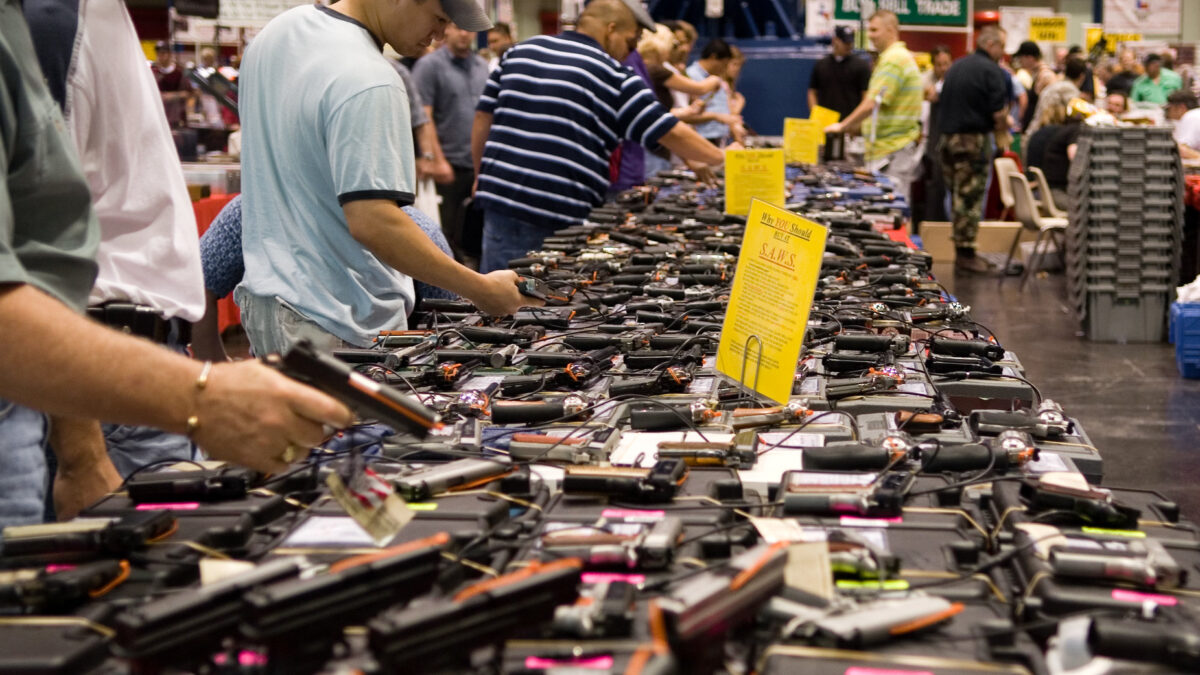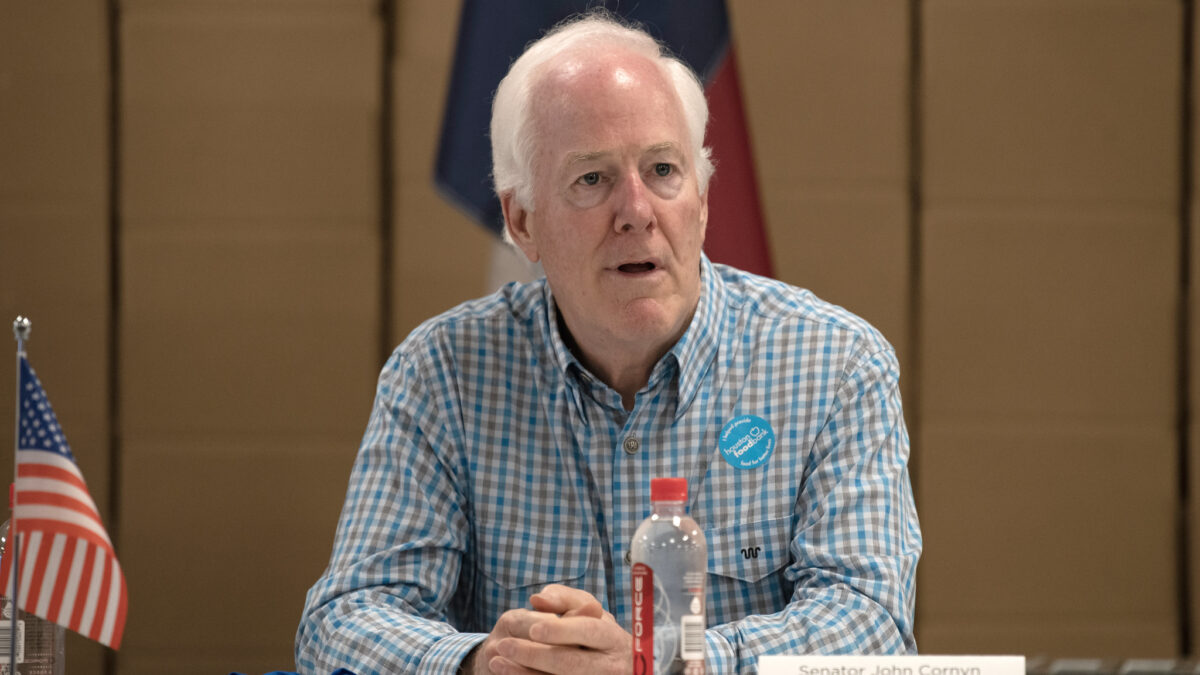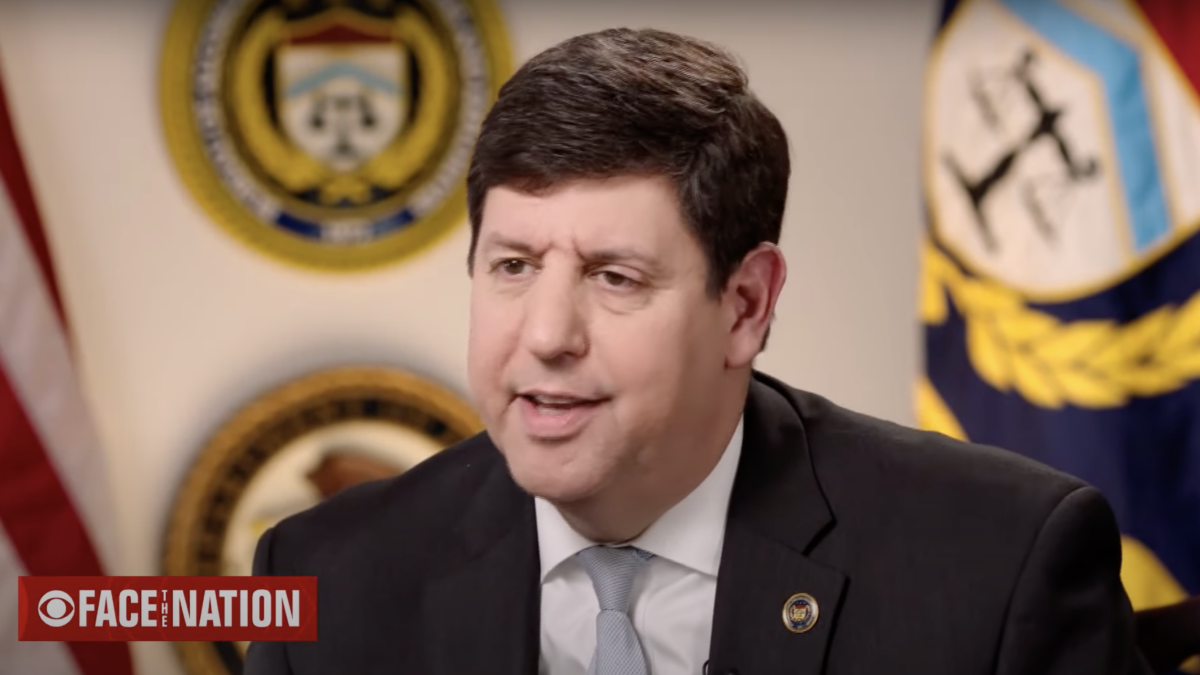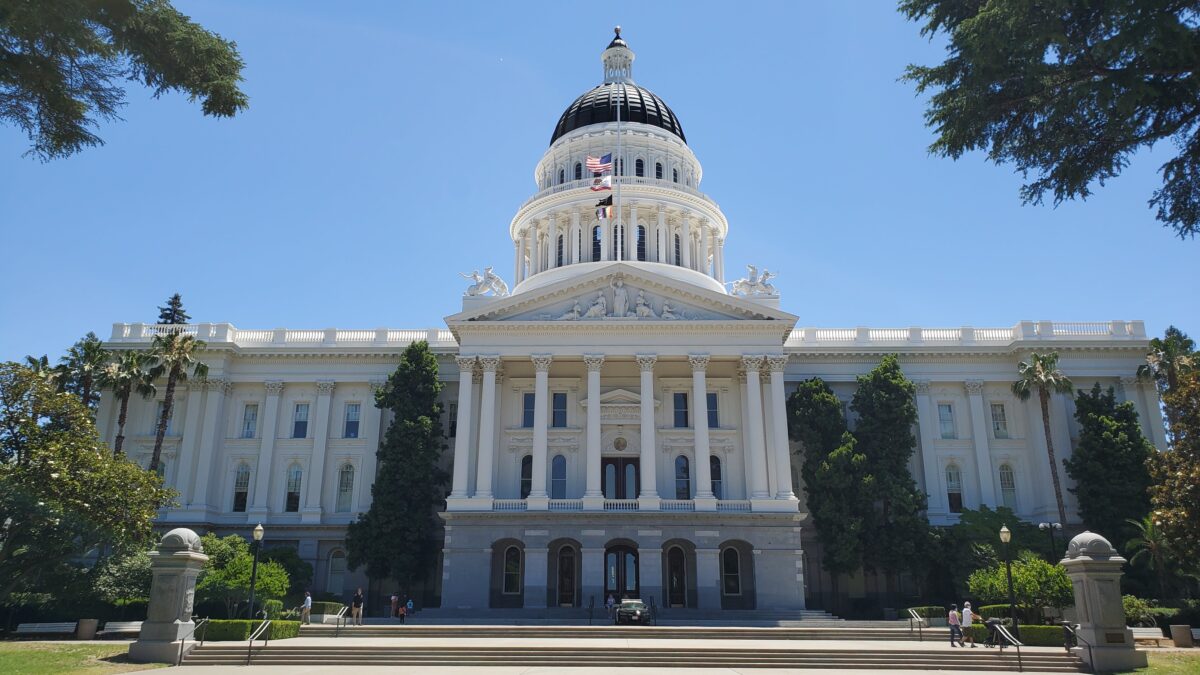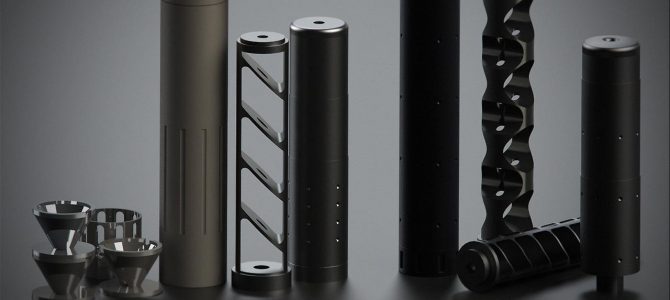
A military jet taking off with its afterburner on full blast. A jackhammer. A sandblaster. A freight train. A rock concert. What do these seemingly unconnected sounds all have in common? They’re significantly quieter than the sound of a gun being fired. Even one with a “silencer” attached to it.
Why is this important? Because there’s a growing movement to make it easier for gun owners to reduce the ear-piercing sounds of the guns being fired, and progressives are outraged by it. They’re outraged by it because they don’t have the slightest idea how so-called gun silencers actually work. Here’s the Washington Post‘s most recent take on the issue in an article headlined “Gun silencers are hard to buy. Donald Trump Jr. and silencer makers want to change that”:
The federal government has strictly limited the sale of firearm silencers for as long as James Bond and big-screen gangsters have used them to discreetly shoot enemies between the eyes.
[…]
The silencer industry and gun rights groups say critics are vastly overstating the dangers, arguing that Hollywood has created an unrealistic image of silencers, which they prefer to call ‘suppressors.’ They cite studies showing that silencers reduce the decibel level of a gunshot from a dangerous 165 to about 135 — the sound of a jackhammer — and that they are rarely used in crimes.
But gun-control activists say silencers are getting quieter, particularly in combination with subsonic ammunition, which is less lethal but still damaging. They point to videos on YouTube in which silencers make high-powered rifles have ‘no more sound than a pellet gun,’ according to one demonstrator showing off a silenced semiautomatic .22LR.
Note how the Washington Post waves away the actual data and science surrounding the issue by immediately characterizing the indisputable science of ballistics as nothing more than a competition between studies proponents like and opponents dislike (“They cite studies showing…”). Imagine them saying the same thing about the specifications of a car’s engine: “They cite studies showing that the car’s engine has 6 cylinders and can go up to 130 miles per hour.” You don’t need “studies” to tell you how loud a gunshot is or to tell you how loud that gunshot is when the gun has a suppressor attached. You just need a tool (or simple app on your smartphone) to measure sound.
Then there’s the Washington Post‘s characterization of a .22LR as a “high-powered rifle,” a characterization that is…not even remotely close to accurate. It’s laughably false, since the .22LR caliber is one of the smallest and weakest rifle rounds on earth. On a good day, it can be used to take down small varmints that are no more than 150 yards away, and that’s it.
And don’t even get me started on the inanity of using a YouTube video as your sole source of evidence about the sound levels of suppressed and unsuppressed gunfire. Without even getting into the issue of how a recording device is incapable of capturing the pressure wave associated with a rifle blast, even if it could, your computer’s speakers don’t get close to loud enough to reproduce the actual sound of a gunshot.
But if you thought the Washington Post‘s ignorance of the issue was embarrassing, wait until you see how D-list Hollywood comedians whose entire source of knowledge on guns comes from fictional movies and TV shows tackled the subject:
https://twitter.com/michaelianblack/status/817917309608140802
https://twitter.com/michaelianblack/status/817918859487363073
Unfortunately, Black and Richter are not alone in their complete ignorance of how guns or silencers work. You’ve internalized the myths. You’ve watched the movies and heard the whisper-quiet “pew pew” as the assassin’s bullet is fired. But that’s not how suppressors actually work. Here are the facts.
To put things into perspective, the sound of firing an unsuppressed AR-15 — the most popular rifle platform in America — is approximately 165 decibels, or dB. A jet engine from 100 feet away is approximately 140dB. The federal Occupational Safety and Health Administration bans employers from exposing employees to 115 decibels for more than 15 minutes per day without providing them sound mitigation or hearing protection measures.
Physical pain and potentially permanent hearing damage begins to occur at 140dB. Eardrums will begin to rupture at approximately 150dB. If you fire an AR-15 without a suppressor and without any hearing protection, the overpressure generated by the gunshot will blow out your eardrums, as well as of those of anyone else in the near vicinity. If you were forced to defend your home from armed invaders and had to shoot one of them in a small hallway or bedroom, you and your family would suffer permanent hearing damage from the sound of the gunshot alone.
Andy Richter’s embarrassingly ignorant scoffing aside, this is exactly why the use of suppressors is by definition a health issue. But contra Richter and Black, suppressors don’t silence anything. The term “silencer” is a complete misnomer. To understand why, you need to understand the physics of gunfire.
Let’s start with why gunshots make the sounds they make. If you don’t understand simple ballistics, you’ll never understand the utility of a simple suppressor. A gunshot’s sound has three components: the expulsion of explosive gases that propel a bullet out of the barrel of a gun, the sonic boom of a bullet breaking the sound barrier, and the sound of the gun’s action (the hammer or striker smacking the firing pin). All of those different components combine to make the deafening noise that is a modern gunshot.
A suppressor works by redistributing the flow of explosive gases triggered by the firing of a gun (the first sound component listed above). A suppressor cannot prevent the loud sonic crack created by a bullet exceeding the speed of sound. By redirecting the flow of gas that follows the projectile out of the barrel, a suppressor can slightly reduce (but not eliminate) the sound of a standard handgun or rifle being fired. A decent suppressor for an AR-15 (.223/5.56mm) can reduce the sound of that rifle being fired by 30-35 dB. Thus, a quality suppressor can turn what would’ve been a 165 dB, eardrum-bursting gunshot into a mere 135 dB gunshot — roughly the same volume as a jackhammer you might see a construction worker using. Remember that pain and permanent hearing damage begins at 140 dB.
“But why don’t you just wear ear plugs or over-the-ear hearing protection instead of using a suppressor?” you might ask. It’s a good question. There are a number of reasons why suppressors make sense even if you always double up on ear protection (ear plugs and over-the-ear muffs) when you’re at the range or hunting game. Standard over-the-ear hearing protection combined with the use of ear plugs will reduce the sound of a gunshot by about 30-35 dB, the same reduction as a suppressor. So standard hearing protection, which is far cheaper, obviously makes more sense than getting a suppressor, right?
Wrong, for two reasons. First, sustained exposure to volumes in the 130-140 dB range, which is what you would experience shooting a typical AR-15 with doubled-up hearing protection, will undoubtedly wreak havoc on your hearing. Just ask anybody who works on a flight line or who hunts regularly. There’s no good reason to make it hard for law-abiding citizens to double-up on hearing protection and use a suppressor to reduce the likelihood of permanent hearing damage.
The second reason, and the reason that bears directly on the Second Amendment right to defend yourself with arms if necessary, is that home invaders are not likely to give you an extra minute or two to put the foamies in your ears and locate your earmuffs before they start murdering you and your family.
Plus, when you hear someone break into your home and you grab your gun and enter the hallway and place yourself between the intruders and your children’s bedrooms, you want to hear every last whisper and footstep so you know exactly where the home invaders are, what they’re saying, where they’re going, and how quickly they’re doing so. If you are required to shoot those intruders in that hallway, or next to your children’s bedrooms, you’ll likely neutralize them. But in the process, you’ll probably deafen yourself and your family. And for what reason? Because some Hollywood ignoramus thinks “silencers” will turn everyone into Jason Bourne?
We’ve already established that there are multiple legitimate, legal reasons for homeowners or hunters to use suppressors to protect their hearing. What about criminals, though? Wouldn’t they also desire that same increased access to the tools of every Hollywood assassin?
Not really. For starters, if a criminal wanted to make a suppressor, it wouldn’t take much time. A suppressor for a gun isn’t much different than a muffler for a car. It’s a tube of metal with some baffles inside. That’s it. It takes far more time, effort, money, and expertise to build your own rifle in your garage (a process that is entirely legal) than it does to make your own suppressor (a felony). So why aren’t criminals building their own suppressors in droves?
Because it doesn’t make any sense for them to do so. Why? Because as we now know, so-called silencers don’t make anything silent. They merely take something that is deafening and make it not-deafening. At the same time, they make a firearm heavier, longer, less accurate, and therefore less lethal. Criminals tend to use firearms that are cheap, easy to find, and easy to conceal. Suppressed guns are anything but that.
Then there’s the fact that overwhelming majority of handguns, which are used in 90 percent of gun murders in the U.S. where the type of gun is known, are physically incapable of even accepting a silencer. That’s because a gun must have a threaded barrel to accept a silencer. Since threaded barrels are expensive and in far shorter supply than non-threaded barrels, your average criminal looking for a quick score has little to no interest in acquiring a gun that has one. Suppressors aren’t cheap, they aren’t easy to conceal, and it’s really difficult to find guns that can even accept them. When you know these facts, you can understand why suppressors are never used by criminals. They’re just not worth the cost or the hassle.
Gun controllers want you to believe a suppressor can take a garden-variety criminal and turn him into James Bond. They want you to believe suppressors make criminals more lethal. Nothing could be further from the truth. Suppressors are nothing more than sound-reducing mufflers for guns. And their regulation compared to that of actual firearms makes absolutely no sense. I can go into any gun store in my state right now and walk out with any high-powered rifle I want within minutes. The federal gun dealer will run a background check on me, see that my record is clear, and then sell me the gun, which I could then use to shoot people or things.
Compare that to the legal process for getting a suppressor, a hollow metal can which cannot fire bullets and has the approximate lethality of a roll of paper towels. To legally possess a suppressor, I must receive special permission from the federal Bureau of Alcohol, Tobacco, Firearms, and Explosives (BATFE). I am required to pay a special $200 tax to receive that permission. I am required to fill out extensive paperwork (far longer and more intrusive than what is required to purchase an actual firearm) and provide BATFE with a photograph and two sets of fingerprints.
I am required to inform my chief local law enforcement officer that I am in possession of a National Firearms Act (NFA) item. I am required to keep all of my paperwork with the NFA item wherever it goes. And I must get permission from BATFE to cross state lines with that NFA item. Right now, that approval process takes upward of a year. So if I were to walk into a federal gun dealer who is licensed to sell NFA items today, I’d be lucky if I could take possession of a simple suppressor before 2018. On what planet does that make any sense?
The simple fact of the matter is that it makes zero sense. Suppressors allow legal gun owners to protect their hearing and that of their loved ones. They enable legal gun owners to more effectively protect their homes and their families. That’s it. They don’t make it easier for crooks to commit crimes any more than car mufflers make it easier for alcoholics to drive drunk. In fact, suppressed weapons are less attractive to criminals because they’re expensive and make weapons extremely difficult to conceal.
These are facts, not opinions. And they’re facts based on an understanding of basic ballistics and gun mechanics. Gun suppressors take a sound that will instantly cause permanent hearing damage and reduce it to the whisper-quiet level of a jackhammer or a jet taking off from an aircraft carrier. Regulating mufflers for a gun the same way we regulate machine guns makes no sense. Imagine a legal regime that allowed you to instantly buy a car today but forced you to wait over a year before you could legally install a muffler on it.
If lawmakers want to enable their law-abiding citizens to protect their hearing without having to jump through hoop after hoop or pay a special tax for the privilege of not going deaf, they should amend the National Firearms Act to exclude suppressors. But if they think their constituents and their families deserve to go deaf because one too many politicians or celebrities learned about guns, gun laws, and physics from James Bond movies, then they deserve to get an earful.


